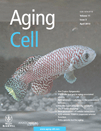Replication factor C1, the large subunit of replication factor C, is proteolytically truncated in Hutchinson–Gilford progeria syndrome
Summary
Hutchinson–Gilford progeria syndrome (HGPS) is a rare genetic disorder because of a LMNA gene mutation that produces a mutant lamin A protein (progerin). Progerin also has been correlated to physiological aging and related diseases. However, how progerin causes the progeria remains unknown. Here, we report that the large subunit (RFC1) of replication factor C is cleaved in HGPS cells, leading to the production of a truncated RFC1 of ∼ 75 kDa, which appears to be defective in loading proliferating cell nuclear antigen (PCNA) and pol δ onto DNA for replication. Interestingly, the cleavage can be inhibited by a serine protease inhibitor, suggesting that RFC1 is cleaved by a serine protease. Because of the crucial role of RFC in DNA replication, our findings provide a mechanistic interpretation for the observed early replicative arrest and premature aging phenotypes of HPGS and may lead to novel strategies in HGPS treatment. Furthermore, this unique truncated form of RFC1 may serve as a potential marker for HGPS.




